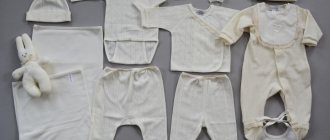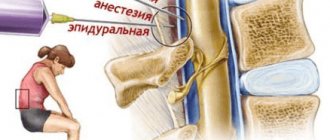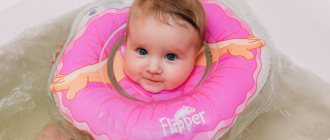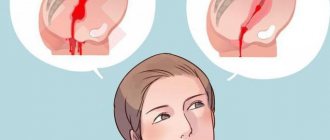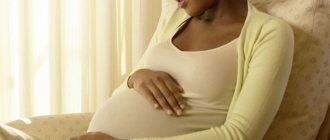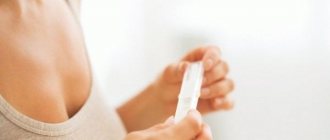What to do with a newborn after discharge
First of all, you need to inform the clinic about a new resident.
You should prepare for the pediatrician’s arrival: buy shoe covers for him, stock up on a notepad and pen to write down how to properly care for your baby in the first days after the hospital. The doctor will examine the child and recommend procedures that need to be performed for the newborn.
For several days, you should distribute responsibilities around the house, because both mother and child need proper sleep and rest to recuperate.
Microclimate at home
In the first days of a newborn, the number of relatives at home should be limited. A change of environment is stressful for a baby. He needs time to get used to it. It is enough if only family members are at home.
The room must be ready for the arrival of the mother and child from the maternity hospital. It is necessary to do wet cleaning and ventilate the room well.
Organization of a children's room
Renovations in the children's room are carried out in advance. It will be better if the parents choose the wallpaper and ceiling color together. For children, pediatricians recommend setting aside a cool room with an air temperature of +20...+22°C and a humidity of 55-60%.
When arranging a room, it is advisable to give preference to a minimum of furniture and curtains made of light fabric. The surface of the items must be made of material that can withstand daily wiping with a damp sponge or rag. Curtains are selected that are wear-resistant. It is best if their fabric is easy to wash, dries quickly and does not wrinkle.
There should be no living plants, long-pile carpets or rugs in the room.
Upon arrival with an infant, a children's corner is required. From the furniture you need to choose a crib, a changing table and a wardrobe or chest of drawers for clothes. The bed is placed in a part of the room where it will not interfere with movement. Choose a place away from the window. It is better not to hang a heavy canopy on the crib. Thick fabric will collect a lot of dust. It is better to choose a lightweight product made of airy, translucent fabric.
It is recommended to choose a mattress from hypoallergenic materials. He must be tough. A newborn will not need a pillow. It is advisable to choose bed linen from natural fabric, which will be pleasant to the touch.
The changing table for caring for a newborn must be positioned in such a way that there is a minimum distance between it and the cabinet with baby clothes.
Baby clothes
Parents should take care of their children's wardrobe even before giving birth. It is not recommended to choose items made of rough material or with many fasteners (hooks, zippers, buttons). When purchasing, you should pay attention to the seams. They should not rub the baby's delicate skin. The best option is to place the seams on the outside of the product.
Clothing should be made from natural materials. The child should not be allowed to overheat. His indoor cottons may be one layer warmer than adults', but no more. To determine whether your baby is warm or cold, just check the back of his head. If it is cold, it means the child is frozen. If the back of the head is slightly damp, the baby is hot and needs to be undressed.
A newborn should wear disposable or reusable diapers under his clothes. They are hygienic and do not cause any harm to delicate skin, provided they are replaced in a timely manner. Conservative parents prefer to use reusable products, but for outdoor use it is better to choose a disposable option.
Newborns defecate after each breastfeeding, so there should be a sufficient supply of diapers in the house.
Morning toilet of a newborn
Proper child care after childbirth necessarily includes morning toilet. After waking up, the newborn wipes his face with cotton balls soaked in boiled water. Then the eyes are cleaned. To do this, apply a damp cotton pad from the outer edge of the eyelids to the inner corner. A new disc is taken for each eye.
The nose is cleaned with a tourniquet soaked in baby oil. They carefully remove the crusts.
If the umbilical wound has not yet healed, it is treated with hydrogen peroxide or calendula tincture.
Body temperature is measured. The norm for a newborn is +37.2°C.
Nutrition
Breastfeeding should be established. To do this, you need to eat regularly and get proper rest. It is recommended to temporarily exclude from the diet foods that can provoke an allergic reaction in the baby. It is advisable to completely give up coffee. Fruits and juices must be introduced into the diet gradually, monitoring the child’s reaction. Preference should be given to fruits of green shades, as they are less likely to cause allergies.
The diet of a nursing mother should mainly consist of soups, cereals, and boiled lean meat. It is better to exclude cabbage and legumes to prevent bloating in the baby.
A nursing mother should not be nervous. She needs peace.
If you are concerned that you are not producing enough breast milk, you should drink as much fluid as possible. This could be warm tea or milk. There is no need to wash your breasts before each feeding, just shower daily.
It is necessary to monitor the baby's correct attachment during feeding in the first days. This will help prevent cracks from appearing.
You should express only when there is a planned absence or stagnation of milk. During one feeding you need to give only one breast - left or right, changing the order. With sufficient lactation, the baby will be completely saturated.
Newborn's first bath after the hospital
Babies are bathed daily, but with soap - once a week is enough. It is better to purchase a bath for water procedures in advance. The umbilical wound must be carefully monitored.
To carry out water procedures, in addition to the bath itself, you will need:
- towel;
- water thermometer;
- baby soap or foam;
- small ladle;
- potassium permanganate.
It is recommended to bathe your baby before bedtime. It is prohibited to carry out water procedures immediately after feeding. First you should prepare everything for swimming:
- Wash the bath with soap.
- Boil water and cool it to +37°C.
- Make a weak solution of potassium permanganate. Its shade should be slightly pink.
- Prepare water for rinsing in a ladle.
- Add disinfectant solution to bathing water.
The first time it is better to carry out the procedure together. One of the parents will hold the newborn, and the other will wash it. The baby, wrapped in a swaddle, is carefully immersed in the water, back down. The head should remain on the surface. You need to make sure that water does not get into your eyes, mouth, ears and nose.
The diaper is gradually unrolled and the baby is given time to get comfortable. They carefully soap his body, paying close attention to the folds. Then they are lifted above the surface of the water and rinsed from the ladle. Wrap in a soft towel.
Water should be boiled until the umbilical wound heals. In addition to potassium permanganate, you can add a decoction of chamomile or calendula to it.
After the navel has healed, it is allowed to bathe the child in tap water without additives.
The duration of the first bath should not exceed 5-7 minutes. Gradually, the time spent in water increases.
Hygiene procedures after bathing
After bathing, the baby is wiped dry. First, the navel is treated with a cotton pad or swab dipped in a solution of hydrogen peroxide. If necessary, the surface of the wound is lubricated with brilliant green.
Then all folds on the body are treated with baby oil or Vaseline heated in a water bath. Put on a diaper, baby vest and rompers or swaddle. After this, the baby can be fed and put to bed.
Umbilical toilet
Neonatologists and pediatricians do not have a consensus on how to treat the umbilical wound. Some advise using brilliant green or hydrogen peroxide. Others use calendula tincture or boiled water.
Until the wound heals, when putting on the diaper you need to tuck the edge of the product, leaving the navel open.
Trimming nails
Nails are trimmed as needed using special children's scissors with rounded edges. Cut the nail straight along the growth line. It is best to carry out the procedure while the baby is sleeping.
Cleanliness is the key to health, order comes first!
The first and main rule is that the baby must live in a clean and prepared house for him. This requirement does not mean that a young mother should spend almost the last days of pregnancy cleaning. Preparing housing for the adoption of a baby is the concern of dads and grandmothers; not a single speck of dust escapes their attentive gaze. The apartment into which the mother and baby will arrive after being discharged from the maternity hospital should be thoroughly washed and all dust wiped off. It is advisable to reduce the number of carpets and soft toys in the house, as they accumulate dust particles that can cause allergies in the baby. The ideal option would be to create a separate children's room. But! If your living conditions do not allow this, do not be upset. The main thing is that the apartment is clean and bright.
While the mother and baby are in the maternity hospital, the young father should purchase the following things necessary for the child:
- A crib. Modern children's stores offer a huge selection of cribs. Choose to your taste, the main thing is that the baby is comfortable. Along with the crib, you should purchase a mattress and special bumpers for the crib.
- Small children often wake up at night, so it would be a good idea to purchase a night light.
- Cabinet for children's things. The little person's clothes should be stored separately from the things of adults. Along with buying clothes, you should also take care of special detergents for washing children's clothes. Especially adult powders and shampoos can cause allergies on the baby’s delicate skin.
- Humidifier. The children's room must be well ventilated. In addition, you need to constantly humidify the air in the room. This should be done especially in the cold season when central heating is running. Dry air can dry out the baby's delicate mucous membranes and cause a runny nose. But, if the budget of a young family does not allow the purchase of such a miracle of technology, it does not matter, you can make do with improvised means:
- It is advisable to do wet cleaning in the baby’s room in the morning and evening;
- ventilate the room well periodically;
- It is advisable to place a container of water near the baby’s crib, or throw wet sheets over the central heating radiators.
First walk with baby
Pediatricians do not recommend walking with the baby in the first days after the birth. At this time, his body is too weak and his immunity is not strong. A child can easily catch an infection and get sick.
For the first walk, the air temperature should not fall below -5°C. In winter, it is enough to stay in the air for 10-15 minutes. During the summer, you can walk for up to half an hour for the first time. Gradually, the duration of the walk increases daily by 5-10 minutes.
In summer, a child can be in the fresh air for 3 hours several times.
In winter you need to pay attention to the weather. If the temperature drops below -15°C, the walk will have to be postponed.
When dressing your baby outside, you need to be careful to prevent him from overheating. It is more dangerous than hypothermia. Dress the child a little warmer than adults.
First meeting
Newborn babies on postcards and pictures look like angels: rosy-cheeked, plump, with folds. Perhaps because of this stereotype, new mothers are surprised by the sight of their own newborn baby: wrinkled skin, uneven color, covered with something white, a disproportionately large head, thin, twisted arms and legs... Such a sight is not at all for the faint of heart. Therefore, every mother immediately has a question: is everything okay with her baby? The fact is that the appearance of newborn babies is always so strange. It's quite normal. The appearance has its own characteristics, which disappear some time after birth (several days, months). Most often this is:
- The head is oblong, ovoid in shape. The bones of the skull, passing through the narrow birth canal, adapt to them, so the head immediately after childbirth is exactly this shape. It will become round in a few days.
- The presence of fontanelles - depressions on the baby’s head that are covered with skin. Their overgrowth occurs by the age of one year.
- Swelling of the face. Sometimes because of this, your eyes may not even open. This phenomenon goes away after a few days.
- Physiological hypertonicity is a normal condition in the first days of the newborn period. By about three months of age, the legs and arms stop compressing much. If this does not happen, be sure to consult a doctor.
- It happens that in boys the testicles (both or one) do not descend to the groin area. You don’t have to concentrate on this for up to a year. But if the situation does not change by this age, the baby needs the help of a surgeon.
- Swelling of the nipples, sometimes milk can even be released from them (regardless of the sex of the child), redness and enlargement of the genitals, and bleeding from the vagina in girls is considered as normal. This condition is explained by a hormonal crisis. It can occur 3-5 days after birth and lasts about a week.
Diaper or vest
During infancy, a child spends more time asleep than awake. Clothing that restricts his movements can make it difficult for a baby to sleep. He cannot yet coordinate muscle contractions and constantly wakes himself up with careless touches of his hands or feet.
In this case, the diaper will serve as an assistant for the mother. Just don’t swaddle your baby too tightly. In the future, this can lead to problems with the hip joints and increased muscle tone.
During short periods of wakefulness, it is better to wear a vest and rompers. This way the child will feel more free. You should not wear a hat, even the thinnest one, at normal ambient temperatures. It will only be useful after swimming.
Dr. Aibolit
The local pediatrician usually visits the baby within the first three days after discharge from the maternity hospital. He assesses the child's condition, examines the umbilical wound and the condition of the fontanel. Will give recommendations to a young mother on how to care for her baby. During the first month, the pediatrician will visit the little patient every week and evaluate his condition.
In addition to the doctor, a visiting nurse will also come to visit. She will keep a baby card and visit him once a week for the first month of life.
A month after birth, the baby will have her first independent trip to the children's clinic, where the little man will be weighed, measured and his general condition assessed. After the first month of life, the baby will have to undergo a medical examination, which includes blood tests from a finger and urine, an examination by a neurologist and a surgeon. In addition, all children are required to undergo an ultrasound of the hip joints, this is done to exclude such a disease as hip dysplasia.
Even in the maternity hospital, the baby will be vaccinated against tuberculosis and hepatitis B. You should not refuse them, there are a lot of people in the world with these serious diseases. It is better that such troubles never touch the little man.
Colic in a newborn
Colic in a newborn is caused by air that enters the digestive tract and presses on the walls of the stomach, thereby causing unbearable pain to the baby. The attack passes in 3-4 hours. The older children get, the easier it is for them to cope with colic.
There are several factors that provoke discomfort:
- improper attachment to the breast;
- the child cries a lot;
- after feeding, they were not given the opportunity to burp air;
- the newborn spends too much time lying down, which makes digestion difficult;
- the baby was overfed.
It is easy to recognize infant colic: half an hour after the evening feeding, the baby suddenly begins to scream loudly, and calms down 2-3 hours later, also suddenly. With such symptoms, the newborn should be shown to a pediatrician to confirm the diagnosis.
For colic, it is recommended to massage the abdomen with light clockwise movements and carry the baby vertically to allow air to escape faster. In extreme cases, a gas vent tube can be used. From pharmaceutical preparations, the pediatrician can prescribe a product based on fennel or simethicone.
We feed ourselves
No sane mother would voluntarily give up breastfeeding. Even if this threatens with extra pounds and the inability to leave the child for a long time to mind your own business. This is understandable: super-adapted modern formulas cannot compete with breast milk.
It provides the baby with complete nutrition, vitamins and microelements in the best combination, not to mention such an important thing as immune protection. And it’s much easier for a woman: it’s one thing at night or on a walk, when the baby gets hungry, to unfasten her bra and give the breast, rather than jumping out of bed or running as fast as she can home to heat the water and prepare the formula (See “What to do if your breasts hurt.” after feeding")...
Parental behavior
In the first months of life, the child still does not hold his head up on his own. Parents should not forget about this. You always need to hold it.
A baby's crying indicates hunger, pain or discomfort.
It should be responded to. There is no need to be afraid to often hold a newborn in your arms; this makes it easier to determine the cause of the cry.
It is necessary to monitor the baby's skin and protect it from diaper rash. The fontanel also requires special attention. The newborn's head must be protected from sharp and hard objects.
Baby's bowel movements
Immediately after birth, the newborn poops and pees little. During the first two days of life, he secretes meconium - dark-colored stool. Then, from about 4 days of life, the feces become golden-yellow in color. The frequency of bowel movements is 3-4 times a day. A newborn can urinate up to 25 times a day.
Sometimes it happens that a newborn may experience constipation or stool retention. Rare bowel movements are not evidence of constipation. With artificial nutrition, bowel movements occur every other day, but the stool remains soft. If your baby has persistent constipation, be sure to consult a doctor. If this case is isolated, additional drinking will come to the rescue.
